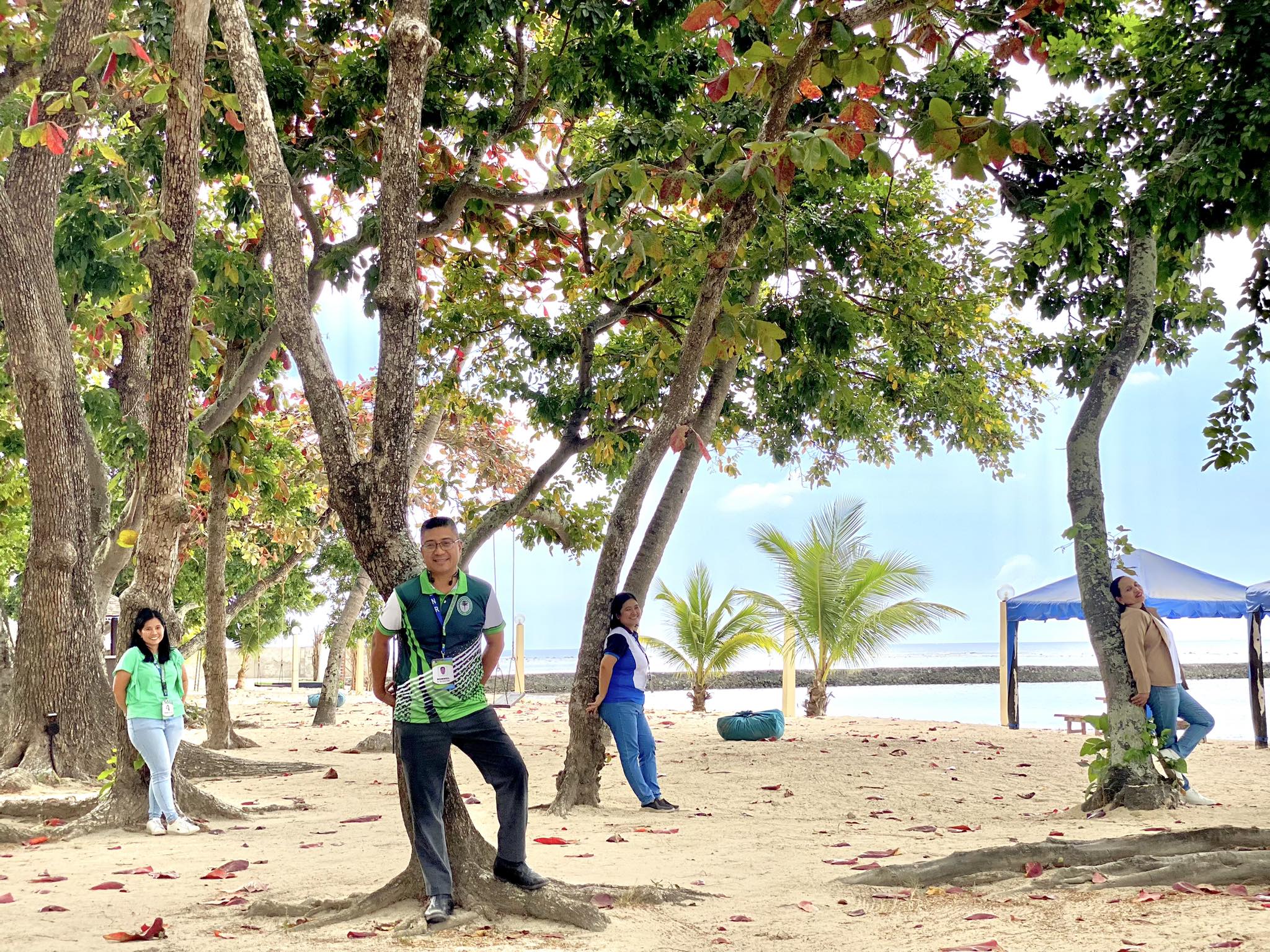
The personnel of DENR-Community Environment and Natural Resources (CENRO) Calaca, Batangas took a break from their busy schedule for fun nature trips and tranquil communion with nature through tree hugging activities in celebration of Valentine's Day and in active participation to the Tree Hugging Campaign spearheaded by the DENR-Forest Management Bureau.
The activity aims to promote the importance of protecting and conserving the forests, as well as the social and health benefits that can be derived from hugging trees, including reduction of stress levels, improvement of mood, and enhancement of the overall mental well-being.
CENR Officer Rommel S. Baybayon led the rest of the CENRO workforce in taking ample time to hug trees during fieldwork activities. The team found different species of native and endemic trees to hug such as Katmon (Dillenia philippinensis), Bani (Millettia pinnata), Talisay (Terminalia catappa), Botong (Barringtonia asiatica), and Molave (Vitex parviflora).
Each tree tells a story, per interview, the tree species identified and hugged were planted in the 1960s and 1970s. It is fascinating to know that these native and endemic trees within a developed area were significantly valued, preserved, and protected despite the developments in the area in the past decades. The presence of such tree species within a developed area clearly shows that balance between nature’s quality and economic development is possible.
The activity ended with the sharing of insights and a reminder to look at what a complex and fascinating form of life they are, the way they adapt to their environment and the connection between humans and trees. The CENRO continuously supports and participates in the departments’ efforts to conserve and protect the remaining forests and natural resources.
The Tree Hugging Movement is a passionate action towards the protection and conservation of forests. The movement, also known as the “Chipko Movement”, originated in the 1970s in Northern India that helped save the forests in the area by emphasizing the interdependence of humans and the environment. ###
- Details
- Parent Category: News & Events
- Category: Press Releases
- Published: 05 March 2024